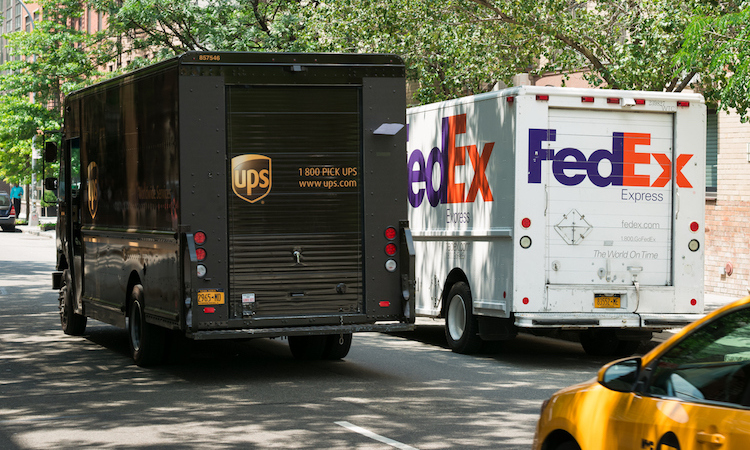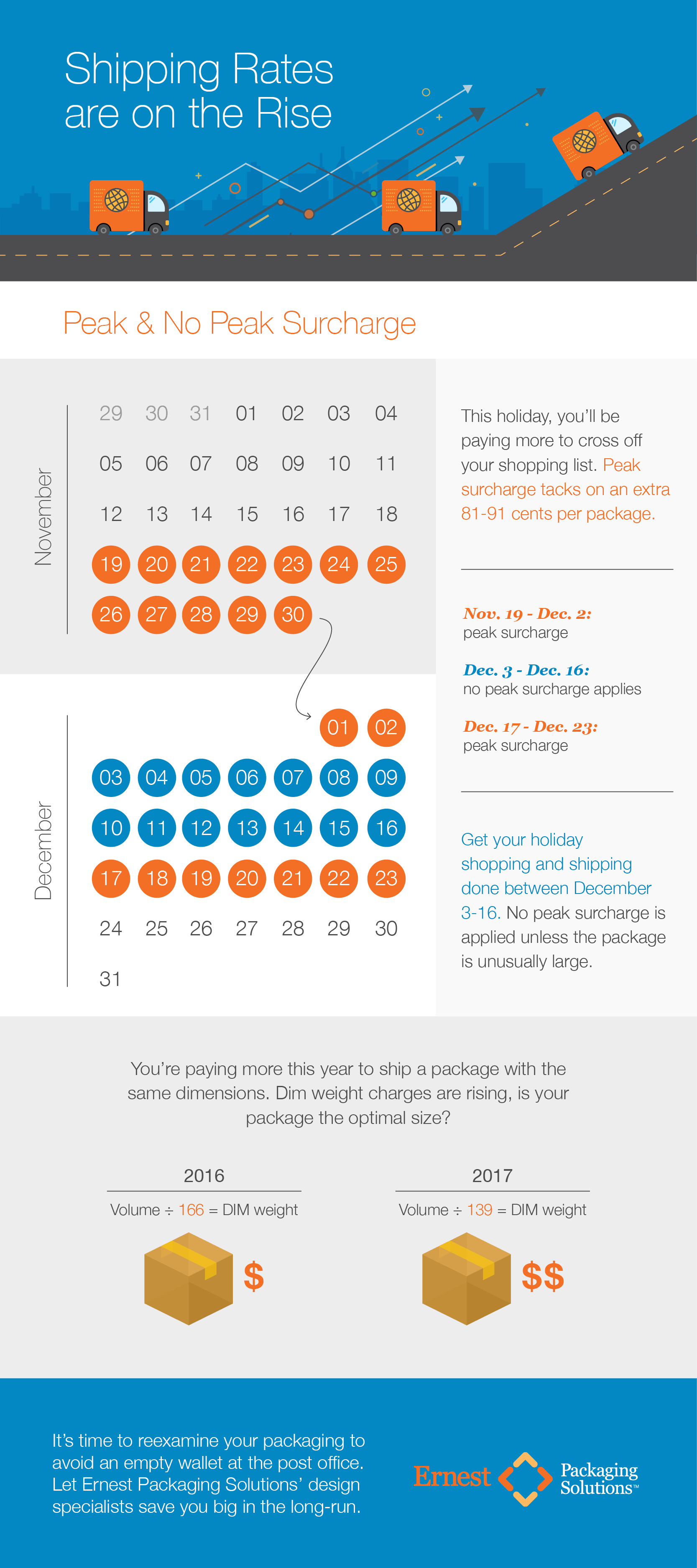Shipping Rates Are on the Rise
September 21, 2017

The world of shipping rates is complicated, just like our relationship with ice cream (you make us feel so good, but those calories feel so bad!!). Shipping is ever-evolving no matter which logistics company is at the helm, and this year both FedEx and UPS have made some major changes to the way you’ll pay for packages. Today, we’re diving into the two big ones, so you know exactly what you’re getting into.
1) Peak Surcharge
There’s no disputing that the holiday season is the busiest time of the year for logistics companies. Millions of packages will make their way across the world throughout November and December, and last year FedEx enacted a Peak Surcharge to help offset some of the cost of the holiday scramble. This year UPS is following suit, so there are no two ways around avoiding these charges. Here’s what you need to know:
Essentially, if you’re shipping a package through UPS anywhere around Thanksgiving or Christmas, you’ll be subject to the Peak Surcharge. Between November 19-December 2, as well as from December 17-23, UPS will tack on an extra 29 cents per parcel for Ground shipping and 81-91 cents for express. If you’re shipping from the contiguous United States to Alaska, Hawaii or Puerto Rico, that fee jumps up to $3.
Notably, the Peak Surcharge doesn’t apply between December 3rd and the 16th unless the package is large, but these new regulations will mean many UPS and FedEx customers will be paying more to cross off their shopping lists.
2) Dim Weight
Packages are measured by two standards: one for physical weight to determine how heavy the parcel is, and one for dimensional weight to account for how much space the object will take up on the truck. The catch? You pay whichever is highest.
Dim weight is nothing new, but previously it was only applied to packages of a certain size. 2015 saw both FedEx and UPS apply dim weight to all packages, regardless of size, as well as a change in how it’s calculated that means more money coming out of your pocket.
In 2017, dim weight is calculated by obtaining the package’s volume (length x width x height), and dividing it by 139, whereas it was divided by 166 in 2016. So let’s say you shipped a 10-pound package that measured 12”x12”x12”:
- In 2016, dividing that package’s volume by 166 gives 10.4, which both FedEx and UPS round up to 11. Even though your package physically weighs 10 pounds, you’ll pay to ship as though it weighed 11.
- In 2017, dividing that same package’s volume by the new divisor of 139 gives 12.43. Suddenly, your 10-pound package now weighs 13 pounds (again, rounded up).
That means you’re paying more this year to ship a box of the same size. As for what 2018 holds for dim weight, we can’t be certain. But with the knowledge from this blog and from our dim weight app, you’re well equipped for the coming holiday season.

With all these changes in shipping costs, it’s hard not to feel like you’re being taken advantage of. The best measure you can take now to protect yourself from these changes, and any further that may be down the line is to reexamine your packaging.
Give us a call, and let our design specialists show you how reducing package size doesn’t have to sacrifice quality, and it can save you big time in the long-run.


